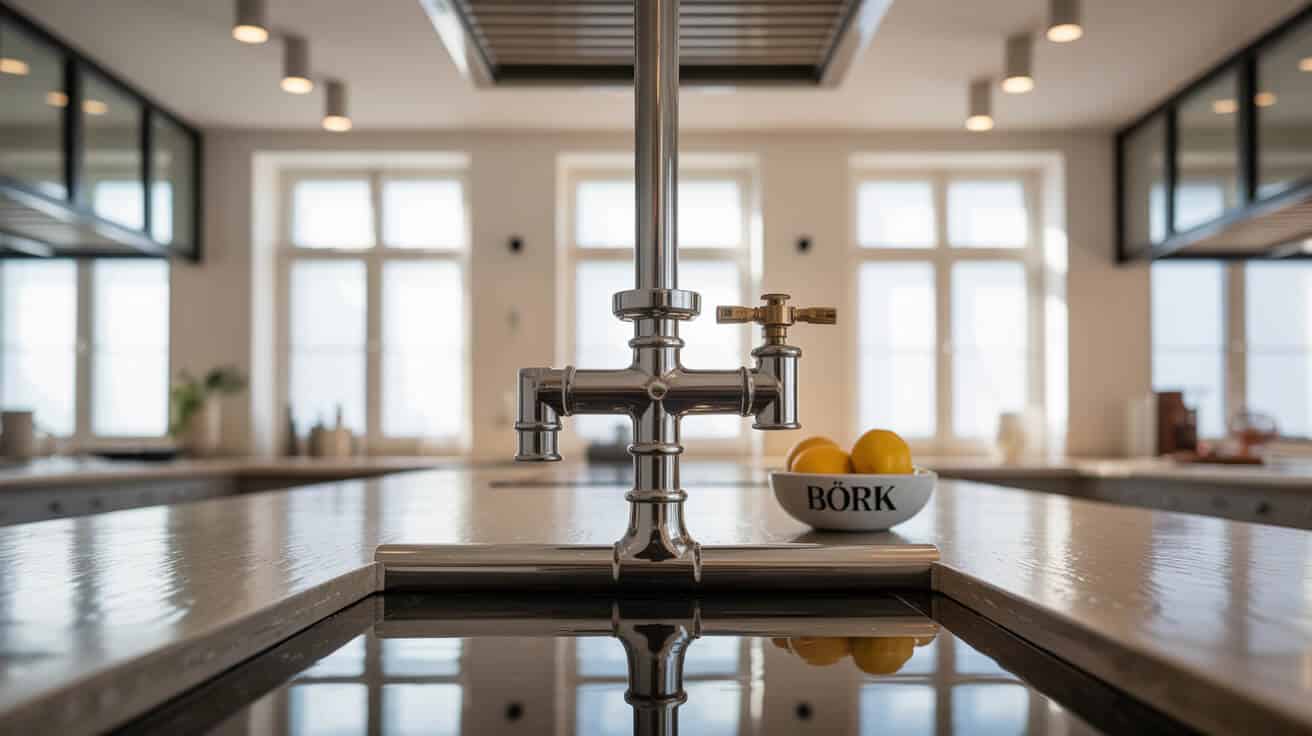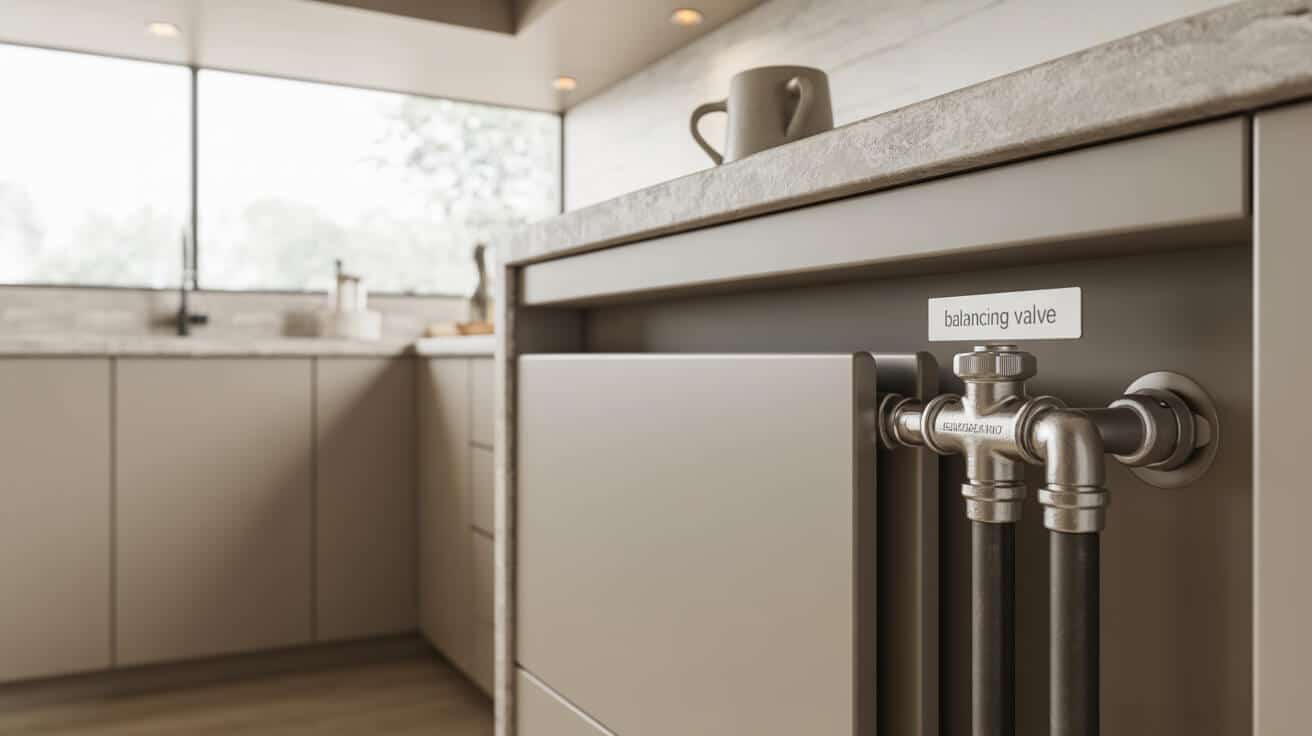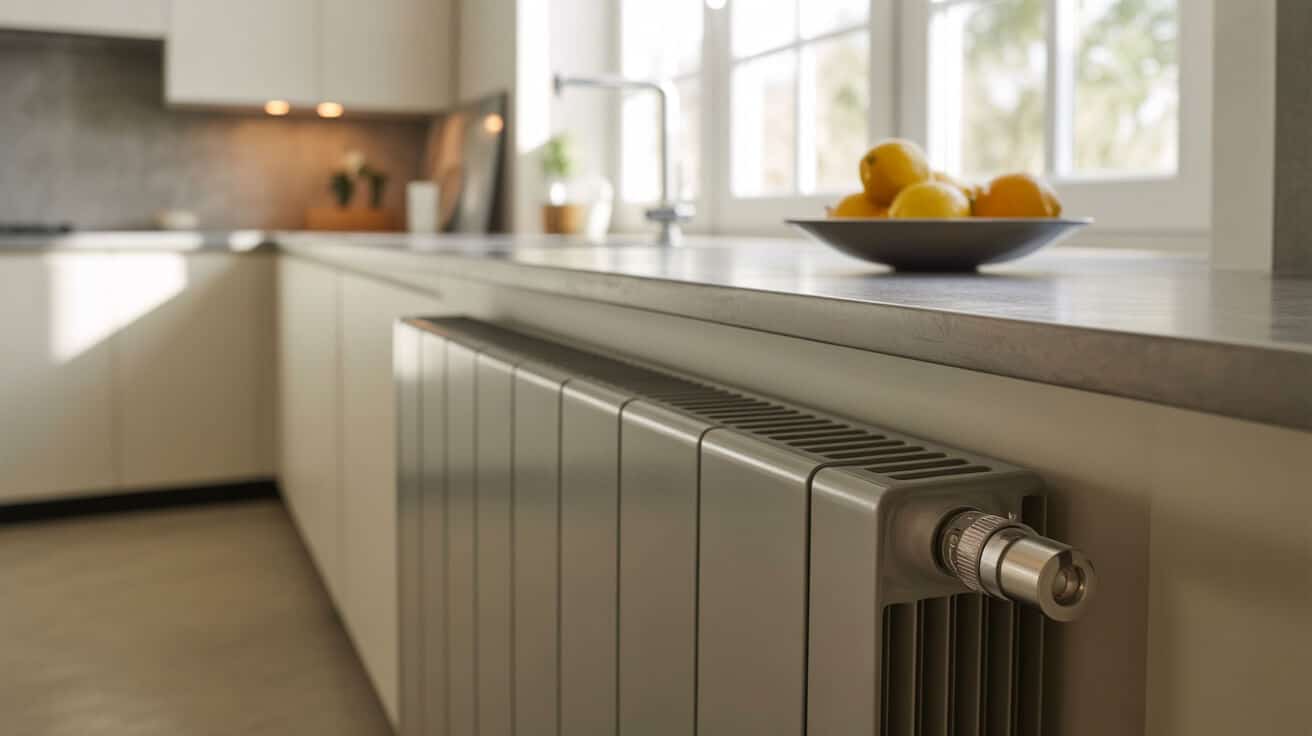Modern heating networks—especially those maintained by experienced plumbing companies such as Plumbers 4U—prioritise balancing not only for system optimization but also for regulatory adherence and recordable value. Balancing emerges as both a technical safeguard and a customer-rights amplifier, weaving together engineering precision, energy awareness, and the assurance that your property’s climate is governed by intent rather than accident.
Lead
Radiator balancing refers to the methodical adjustment of water flows through each radiator in a central heating system, with the objective of achieving uniform heat output for all occupied spaces. Imbalances typically manifest as inconsistent room temperatures, recurring cold or overly warm areas, or excessive energy usage—often traceable to unchecked differences in hydraulic resistance within the pipework. By implementing measured adjustments, commonly via lockshield valves, a technician restores the intended heat distribution, optimising comfort and operational cost. Successful balancing forms a cornerstone of maintenance routines, commissioning processes, energy audits, and property management best practices.
Etymology or name origin
The term “balancing” is rooted in engineering parlance, signifying adjustments made to produce equilibrium across a network or system. In heating, balancing denotes fine-tuning the system’s network of water-carrying pipes and radiators to mitigate disparities in distribution. The concept can be traced to mid-twentieth-century installation guides, as the proliferation of multi-radiator systems necessitated novel solutions for uniform temperature control. Balancing gradually evolved from a one-off commissioning step to a critical aspect of long-term facilities management and regulatory compliance.
Overview and context
Radiator balancing operates within the landscape of hydronic, closed-circuit heating systems—technologies prevalent in homes, offices, schools, care homes, and other buildings with centralised boilers or heat pumps. These systems use water to transport heat throughout the property, distributing energy via a network of radiators designed to emit consistent warmth irrespective of their location relative to the heat source. Imbalances often result from architectural complexity, retrofitted pipework, or uneven radiator specifications introduced through incremental upgrades. For property managers and landlords, consistent temperature control is a necessity for tenant satisfaction, regulatory compliance, insurance risk mitigation, and energy performance monitoring. In modern installations, balancing is integral not just at commissioning but as a recurring service for properties experiencing comfort, performance, or compliance challenges.
Related concepts
- Hydraulic resistance and pressure drop
- Flow distribution algorithms in building services engineering
- Thermostatic and manual radiator control
- Centralised and decentralised heating plant management

History
Origins
The first multi-radiator systems, installed in Victorian and Edwardian mansions and emerging industrial premises, revealed the challenge of providing reliable, evenly distributed warmth. Building custodians originally relied on intuition or anecdotal practices to tweak flows, which achieved inconsistent results and necessitated regular occupant intervention.
Industrial emergence
The expansion of municipal infrastructure in the early-to-mid 20th century, alongside innovations in valve engineering, set the stage for more systematic approaches. Plumbing manuals and engineering standards, including early iterations of the British Standards, formalised balancing as both a procedural and record-keeping discipline. Product manufacturers began producing proprietary balancing valves designed for accuracy, facilitating technical advancements and reducing system complaints.
Contemporary evolution
The digital era introduced electronic sensors, programmable thermostats, and granular data collection. Today’s best practices are embodied in standards such as BS EN 14336:2004, which recognise balancing not just as a commissioning formality but as a recurring operational safeguard. Automated balancing devices and data-driven system reporting are increasingly common, particularly in regulated sectors or eco-focused property portfolios managed by companies prioritising sustainability and occupant comfort.
Concept and description
Principles of hydraulic balancing
hydraulic balancing is grounded in the mathematics of fluid dynamics, specifically Bernoulli’s principle and the momentum equation as applied to closed circuits. The practitioner seeks to equalise pressure drops and flow rates across all radiators, using instrumentation to confirm that each unit receives its engineered share of energy. When left unchecked, a system will funnel more water to the path of least resistance—usually the nearest radiators—leaving distant areas underheated and causing turbulent noise, airlocks, and mechanical wear.
Key components and mechanisms
- Lockshield valves: Subtly regulate inflow to control each radiator’s share of system output; typically set by the installer, often hidden from daily view.
- Thermostatic radiator valves (TRVs): Permit localised control by tenants or building users but rely on underlying balancing for system-wide consistency.
- Circulating pumps: Drive water through pipework, their power and speed influencing balancing dynamics. Variable-speed pumps allow adaptive balancing in advanced systems.
- Measurement tools: Contact or infrared thermometers, pressure gauges, and digital flow metres are used to measure inlet/output temperatures and ensure systemic harmonisation.
Measuring and adjustment methodology
Balancing begins with the removal of entrained air, a process critical for accurate baseline readings. Each radiator is allowed to reach operational temperature with all lockshield valves fully open. Starting closest to the boiler, the lockshield is gradually closed while temperature readings are taken at inlet and outlet, targeting a specified delta-T (commonly 12–20°C per system design). This adjustment proceeds sequentially across every radiator, with the technician documenting results for quality assurance and property records. For complex manifolds or zoned networks, proportional or computational methods may be applied for final calibration.
System types and compatibility
Most balancing takes place in “sealed” or “open-vented” systems using water as the heat transfer medium. Applications extend to underfloor heating (where balancing controls are critical for surface consistency) and systems integrating renewable energy sources. High-rise and multi-zone configurations introduce strategic complexity requiring advanced instrumentation and, frequently, digital control overlays.
Functionality, purpose, and applications
Balancing directly addresses reported issues of cold rooms, persistent noise, slow heat-up times, and escalating utility bills. For property managers and owners, systematic balancing:
- Restores intended performance in new or retrofitted installations.
- Ensures compliance with service contract provisions and insurance requirements.
- Facilitates maintenance scheduling and tenant satisfaction tracking.
- Supports the achievement and evidence of required EPC (Energy Performance Certificate) ratings.
- Serves as a prerequisite for upgrades, including smart thermostatic integration or boiler replacements.
Classifications, types, and variants
Manual balancing
Involves technician-guided adjustment of individual lockshield valves based on cohort temperature readings and calculated heat distribution requirements. This approach is mostly employed in standard-sized domestic properties and smaller commercial installations.
Proportional balancing
Applies mathematical algorithms accounting for all variables—pipe length, radiator size, and system pressure—to allocate optimal flows. Suited for larger multi-zone sites and often a requirement in compliance-driven environments such as healthcare, education, and high-density residential developments.
Smart/electronic and data-driven strategies
Leverages smart valves, digital sensors, and centralised dashboards to monitor and self-correct flow imbalances. Such tools may integrate with building management systems, providing real-time adjustments and data for compliance, maintenance, and tenant relationship management.

Systems, tools, and methodologies
Typical equipment
| Tool/Device | Function |
|---|---|
| Lockshield key/spanner | Adjusts lockshield valve setting |
| Bleed key | Removes air for accurate baseline readings |
| Contact thermometer | Reads precise surface pipe temperature |
| Infrared thermometer | Enables quick, non-contact temp measurements |
| Differential pressure gauge | Assesses pressure drop across system branches |
| Flow metre | Verifies water flow rates where accessible |
| Balancing calculator/app | Assists with proportional settings in complex systems |
Standard methods
- Bleeding: Prior to adjustment, air must be purged to resolve trapped bubbles that interfere with measurement and hydraulic pressure.
- System heat-up: The system is run at consistent temperature, and radiators are monitored for warm-up sequencing.
- Valve adjustment: Stepwise closure of lockshields is performed while monitoring the delta-T and noting system response. Each step is logged for subsequent verification or third-party audit.
- Documentation: Contemporary practice favours digital recordkeeping, a benefit when managing portfolios or submitting reports for compliance.
Stakeholders and entities involved
- Heating engineers and plumbers: Execute system balancing, ensuring all documentation and procedural standards are fulfilled.
- Property managers and facilities directors: Oversee scheduling and recordkeeping, tying balancing outcomes to maintenance cycles and building performance targets for your organisation.
- Landlords and letting agents: Retain balancing logs as evidence in regulatory, insurance, or tenant comfort disputes.
- Regulatory bodies and assessors: Verify compliance with local or national energy and building codes.
- Tenants, homeowners, and building users: Report comfort outcomes and serve as the ultimate beneficiaries of the process—through improved thermal experience and reduced cost.
Legal, regulatory, and ethical considerations
Radiator balancing is referenced in Part L of the UK Building Regulations, which governs the conservation of fuel and power in domestic and commercial premises. The British Standard BS EN 14336:2004 stipulates the procedures and minimum documentation for commissioning and adjustment within heating networks. Rental properties, including those managed by Plumbers 4U and similar service providers, are frequently required to supply evidence of balancing as part of safety certifications, handover packs, or energy performance assessments. Ethical considerations include the honest reporting of measurement results, adherence to recognised standards, and transparency with your tenants or building users regarding the methods employed and longevity of outcomes.
Performance metrics, data, and measurement
Data and measurement practices
| Metric | Purpose |
|---|---|
| Room-to-room temperature spread | Identifies comfort variance |
| System heat-up time | benchmarks real-world response |
| Boiler cycling frequency | Proxy for system stress and inefficiency |
| Delta-T across radiators | Proof of effective balancing |
| Energy use (pre- and post-) | Quantifies efficiency improvements |
| Maintenance logs | Supports compliance and service warranties |
Benchmarking against these metrics provides your organisation with a quantifiable foundation for maintenance planning, compliance reporting, and improvement initiatives—key to sustaining trust and reliability in every building managed or serviced.
Challenges, barriers, and limitations
Operational or technical issues
Complex system design, inaccessible pipework, legacy installations, or under-specified documentation can complicate the balancing process. Airlocks and blockages, particularly in older systems, must be addressed by bleeding or powerflushing before balancing can have meaningful or lasting effect. Zone valves or underfloor heating overlays may require specialist knowledge or equipment, especially where cross-system interaction is present.
Economic and managerial factors
Budget limitations, tenant resistance to temporary service disturbance, and lack of property access may present obstacles for your balancing and maintenance regime. Uncoordinated or ad hoc balancing attempts can create further inefficiency, requiring rework and diminishing trust in outcomes.
Philosophical or regulatory objections
Balancing is sometimes undervalued, considered less urgent than visible repairs or modern controls, or assumed unnecessary in systems with smart thermostats. Regulatory ambiguity and inconsistent enforcement in some jurisdictions can encourage minimal compliance rather than best practice, limiting long-term gains for operators and end-users.
Impact, influence, and legacy
Systematic radiator balancing enhances property value, occupant satisfaction, and energy cost savings. Its effect extends to reducing claims related to damp, condensation, or disrepair, improving energy ratings for property listings, and supporting legal risk mitigation. For portfolio landlords and commercial sites, balancing demonstrates proactive stewardship, differentiating your organisation’s approach. Continuous integration of balancing results into asset management tools and service reporting consolidates long-term value and legal defensibility.
Future directions, cultural relevance, and design discourse
Technological advancements in sensor networks, remote diagnostics, and AI-supported flow management are automating aspects of balancing, bringing precision and responsiveness previously unattainable in legacy systems. Legislative reform is expected to further position balancing as a verifiable, reportable standard for all regulated tenancies and commercial premises. As urban design shifts toward occupant-centric and sustainable buildings, balancing serves as a model for harmonising technical systems with lived experience, setting new benchmarks for comfort, safety, and operational resilience. Within public discourse, attention is also shifting toward transparency, with tenants and owners alike expecting not only reliable heating, but documented evidence of ongoing system optimization aligned with their comfort, safety, and efficiency expectations.

